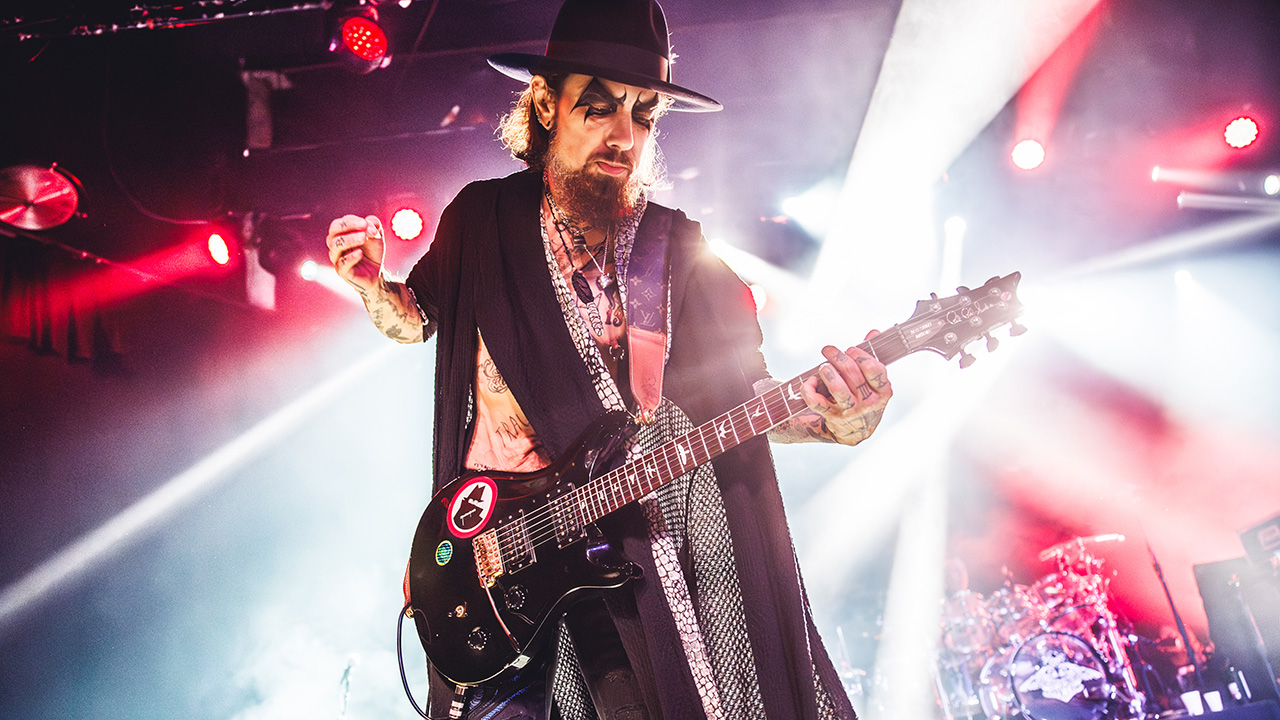
After the release of 1989’s Nothing’s Shocking and 1990’s Ritual de lo Habitual, Dave Navarro was a wunderkind teetering on guitar hero status with Jane’s Addiction.
The band had it all: a poet turned vocalist in Perry Farrell, a punk-loving bassist in Eric Avery, a technical monster on drums in Stephen Perkins, and Navarro, an alt-meets-metal player with an affinity for shreddy yet spanky solos. Jane’s helped usher in the alt-rock revolution with swagger, style, and a decidedly non-grunge sound.
Infighting, drugs and alcohol dogged them, leading to their 1991 breakup. But fame did come, as did Navarro’s hero status. In the years since, Jane’s has been on again and off again, resulting in 2003’s Strays and 2011’s The Great Escape Artist. Neither featured Avery, leaving the original lineup in the past until they regrouped in 2022.
Navarro had to sit things out for two years due to a battle with long Covid. While he healed, Queens of the Stone Age's Troy Van Leeuwen and former Red Hot Chili Peppers guitarist Josh Klinghoffer stood in. And while he’s not entirely recovered, Navarro is back.
“I’m just excited,” he says. “I’m living in the moment right now. We’re having a good time. We’ve broken up like 30 times, so I’ve learned my lesson to be excited about where we’re at. It feels the best it felt in maybe ever.”
Good health and vibes are all around. There’s new music in Imminent Redemption – their first song with Avery since 1991 – and a new album to follow. Navarro says it’s not a rehash, but a rebirth. “The early days were really magical; we can never repeat that.
“The inner turmoil added to the angst and the ferocity onstage. That doesn’t exist anymore, so we’ve moved into this new realm of exploration in sound, which is much more healing.”
You’re back on the road after being laid up with long Covid. How did that impact you?
“I’d just completed making a record with Taylor Hawkins and Chris Chaney [as supergroup NHC]. We mixed and mastered it, and then we lost Taylor. That was in the middle of Covid, and it was actually very painful for me to pick up the guitar after that.
“I didn’t pick up the guitar for about a year. He was such an inspiring artist – not only was he a phenomenal drummer, he was an amazing songwriter and lyricist… just one of those humans that everybody loved.”
It must have been difficult to ramp up again after that.
“After losing Taylor I didn’t play for a long time. Then, about a year into it, I picked up the guitar, started playing some cover songs, and just kind of got used to the instrument in my hand again. Since I had the illness, I was housebound for a long time, and that’s when I really started getting into some out-there guitar players I normally didn’t study, like [session great] Jay Graydon.
“I started studying Jay, and I started diving deep into Van Halen, tone chasing, and reading everything I could about the gear he used, may have used, or that’s rumored to have been used.
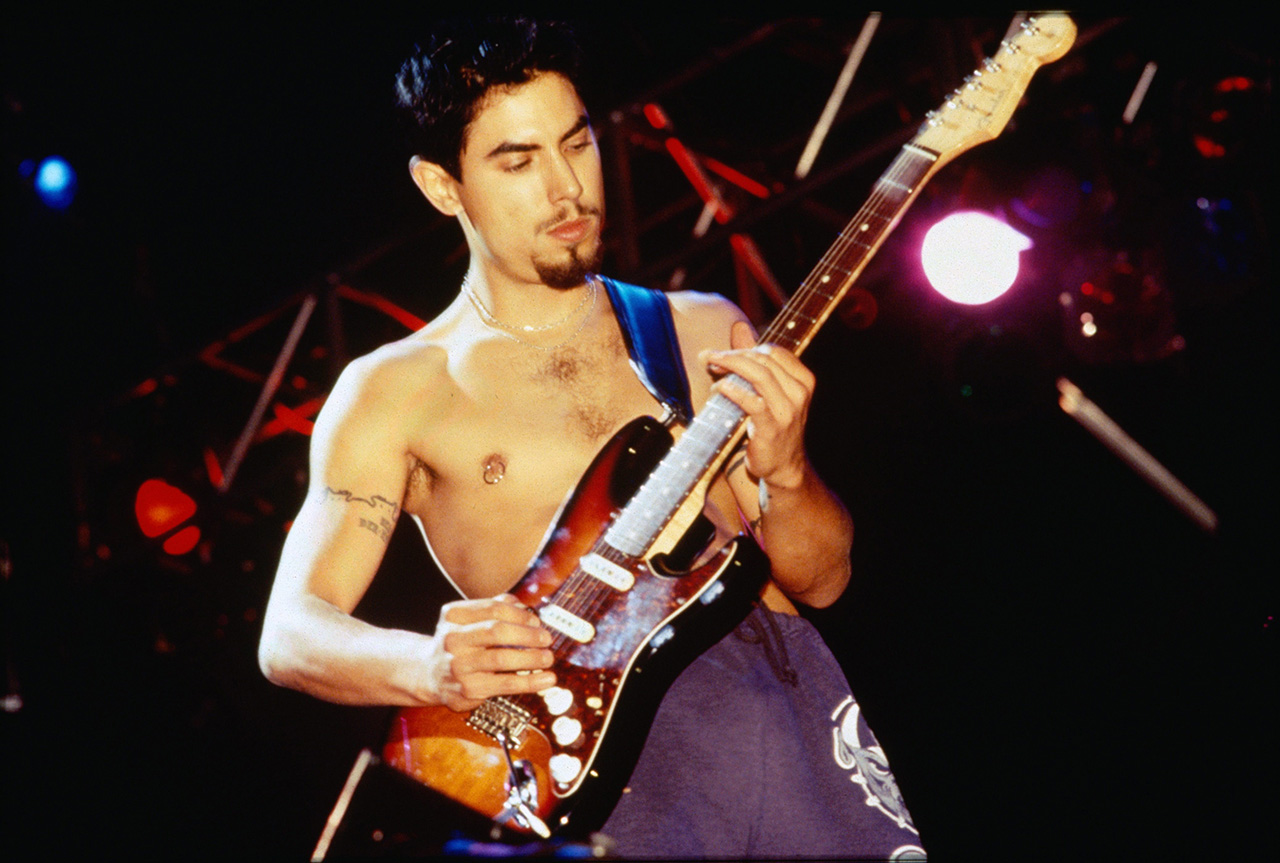
“There are rumors that on the first Van Halen album he used a Plexi. There are rumors it was a Fender Bassman with Celestions and JBLs. Who knows? But I got really nerdy about that stuff and started traveling down those paths.
“Just learning the technical aspects of other players kind of got me interested in the guitar again. I started playing a lot more, and it was a lot of fun. When I grew up, I didn’t have YouTube, so it was impossible to search for a song or a part of a solo and learn how it was done or what gear was used.
“I got really deep into some of the Hendrix pedals that he used. I just kind of turned back to my favorite artists, and that re-inspired me.”
I really enjoyed not knowing what was going to happen. I heard players improvise on the spot… I thought that that’s how it was done
Jane’s had to work with temporary guitarists while you healed – that must have been difficult, too.
“Jane’s had to be on tour with, first, Troy Van Leeuwen, and then Josh Klinghoffer. I love both of those guys, and I was fine with that, but it was hard not to be with my original band.
“I’m glad they brought guys I liked. Since then, I’ve become friends with Josh – which is kind of ironic since I was in the Chili Peppers for a while, and Flea joined Jane’s Addiction [on tour in 1997]. Josh was in the Chili Peppers for a while and then joined Jane’s; it was kind of a weird, full-circle thing.”

How did you ramp up once you decided to get back on stage with Jane's?
“I spent most of my days during my illness just kind of woodshedding guitar and relearning things. I played Jane’s Addiction records front to back and tried to relearn things I’d played in the ’80s and ’90s that I’d forgotten. That was a challenge, and that was fun.
“And because I knew I was gearing up to join again at some point, the band wanted to start working on new music. I was well enough to go in a studio and sit in a chair. I’d sit for 10 hours, so that was easy, and we wrote some new music.”
How do you view yourself as a guitarist today versus the early days?
“I’m a little bit more confident in terms of my approach, and there are a number of reasons for that. In the early days, when we were in rehearsal, we’d be playing and writing, and I’d go home and I wouldn’t touch the guitar. Now, we’ll play in the rehearsal studio, then I’ll go home and work on parts, melodies, solos, and ambient sounds that I think might work well within the track.
“It's an exciting experience for me. In the early days I really enjoyed not knowing what was going to happen. That was on tape, too – they would hit ‘record’ and I’d just start playing. I’d listened to bootlegs growing up, and I heard guitar players improvise on the spot, not doing everything the same; I was under the impression that that’s how it was done.
“I never planned out a guitar solo in the studio. I’d just kind of hit ‘record,’ let it rip, and see what happened. I really think that accommodated the music at the time. I remember doing the solo for Three Days – we were tracking it live, and some executives from Warner Brothers came down. They were sitting in the studio and the whole thing was one take.
“I think that's the only song on that album [Ritual de lo Habitual] that was done in one take. And I think it's because the executives were sitting there. We were trying to be like, ‘Alright, you guys wanna see who you signed here? Here you go!’ As soon as [producer] Dave Jerden hit ‘stop,’ we were like, ‘That’s it. That’s the take.’”
If we’re making a droning noise you might say, ‘Are they gonna play a song?’… If you go with it you’ll kind of get into a trance
“You know, that was all improv. I mean, the structure was written, but the soloing was improvised. And the time between vocal breaks and how we changed from part to part, that was all eye contact.
“I really love recording like that because you get to play with an experimental song. Imminent Redemption is more structured; it’s more verse, chorus, bridge, chorus. But the original concepts and structures were written on the bass by Eric.”
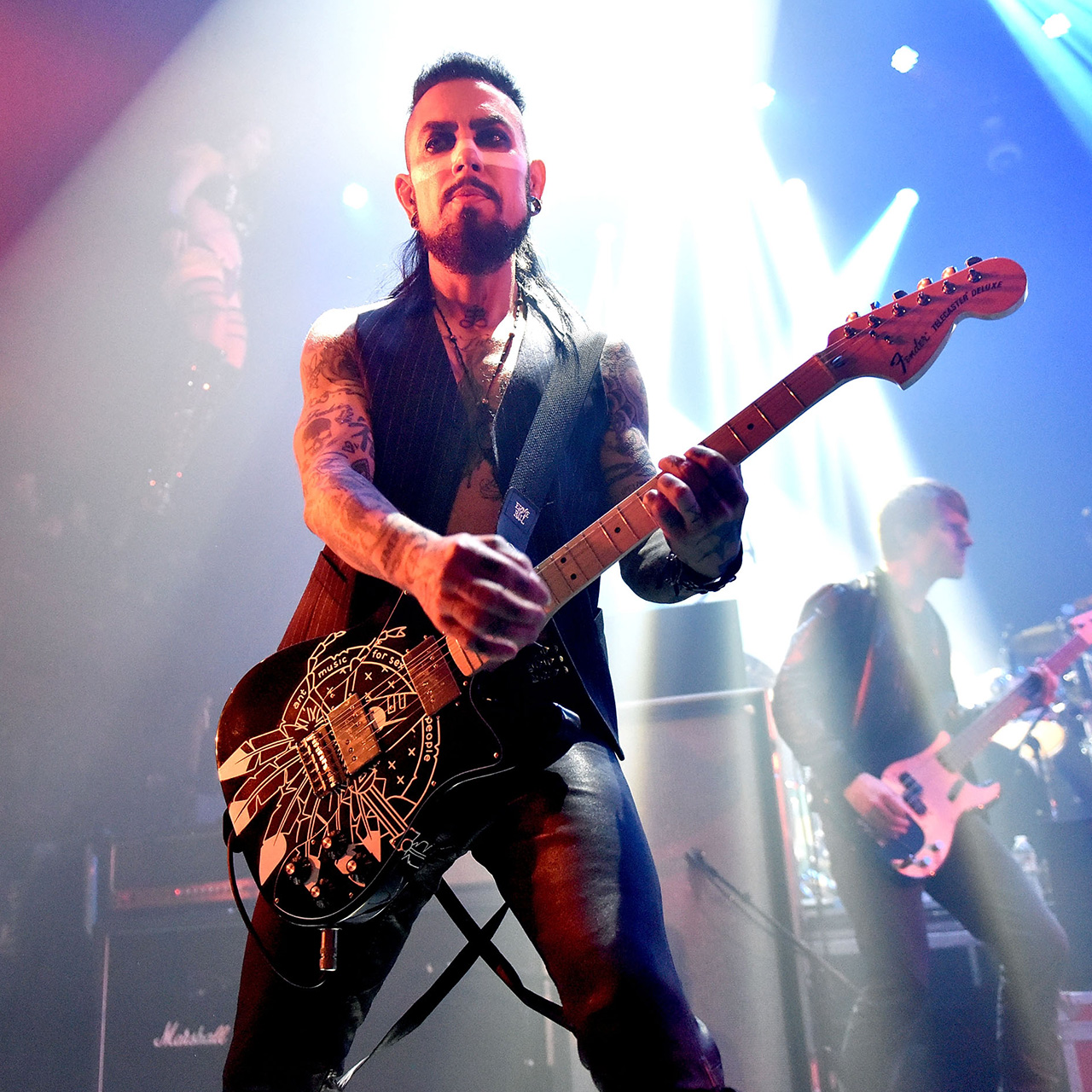
How important is Eric to Jane’s sound?
“I’ve always thought of him as the musical backbone of the band; you can remove the guitar and drums, but if you have his bass and vocals, you’ve got the song.
“I’ve heard a lot of people say, ‘You know you have a great song if you can play it on an acoustic guitar and sing it.’ But in our case, you have a great song on the bass and singing. So the song was written by Eric on bass, and I got to explore.”
So that element of exploration and improv is still there.
“I tend to record way too many tracks. I can sit there and have 100 ideas, and I like to throw them all down, and then I’ll sit there with the engineer and Eric and go through each part.
“It’s like, ‘Yeah, this is great; keep that,’ or, ‘This one, although it’s cool, gets in the way of the vocal.’ It’s almost like painting with too many colors then removing the colors to create the necessary contrast.
“I overplay in the studio. There’s no contrast; it’s all guitars and you don’t hear the bass or drums anymore. But everybody knows that’s how I work so nobody worries. They know we’re going to peel it back. In Imminent Redemption, there are two guitar tracks because I wanted the verses to have a real out-of-tune sound.
“I used the tremolo on the low E, and I kind of bent it and was like, ‘That’s cool, and that’s out-of-tune. But it’s not rubbing enough. There’s not enough attitude.’ So I doubled it, and obviously there’s no way to double the bends at the same time, so you get this really wobbly sound. I liken it to U2’s Bullet the Blue Sky – that might have been an influence there.
Tom Morello was dressed as me – though, of course, he sounded nothing like me. We thought it would be really funny, right? It did not go over well at all
“It’s probably one of the more ‘normal’ rock songs that we have. But the way Perry approached it takes out the ‘normal’ world and puts it into the worlds of psychedelia, shamanism and outer space. Perry’s not going to ever write parts that are obvious. I’m really stoked on that song.”
You said you’d listened to Jane’s early records to relearn the tracks. Which are the most challenging?
“Actually, there’s a couple of times during the set where I’ll give Perkins a look over my shoulder, like, ‘Slow down – watch the tempo here.’ But the more we play, the less I have to do that, you know what I mean? It’s just muscle memory.
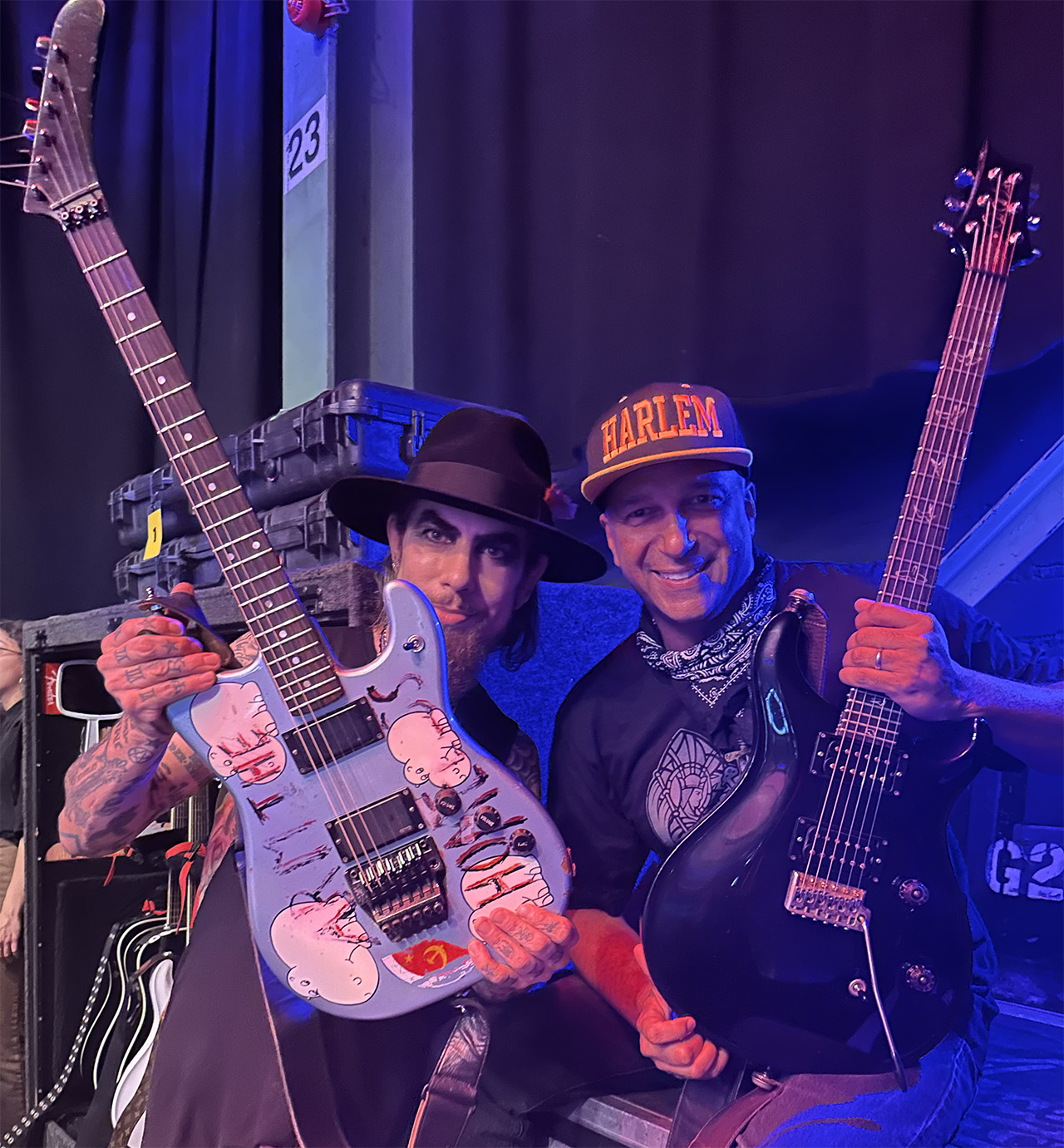
“We’ve also gotten really experimental live, where some songs are seven minutes one night and 12 minutes the next night. I think Eric and I have really boned on ambient, droning, spooky, vibey, weird things that go on for too long – uncomfortably long, if that makes sense!
“If we’re making a droning noise and you’re in the audience, you might say, ‘What the hell is going on here? Are they gonna play a song?’ But Eric and I are completely lost in another dimension. If you go with it in the audience you’ll kind of get into a trance.
“It’s really exciting. We’ve just extended Three Days and added an entirely new section that’s just a soundscape. It’s certainly been different every night, primarily because we’re just exploring. When we play these songs live, the majority of them, we don’t really know where they’re gonna go!”
Do you attribute that to the chemistry of the original lineup?
“We’ve been playing together for so long that we’ve managed to avoid train wrecks, which is pretty special. Stephen will play some bizarre pattern in a song that he’s never played, and me and Eric will look at each other and go, ‘Okay, I guess that’s how it’s going tonight!’
“It makes playing those songs fun again. You’re on the edge of a cliff and you don’t know if you’re gonna fall off. So far, we haven’t. And even if we did, that would be kind of a memorable moment!
“There was a time we played the Paradiso in Amsterdam, and I was standing on the edge of the stage with one foot on the barrier, and I fell into the audience. That’s what’s happening musically with us right now – although we haven’t fallen into the audience yet!”
I threw the guitars into the audience… Five minutes later I was like, ‘What am I going to do now?’
Speaking of the unknown and unexpected, Tom Morello turned up on stage with you recently, which reminds me of when you unexpectedly jammed with John Frusciante. What’s it like for you in those moments?
“They’re nothing but exciting because these guys are great, and I have love and respect. I know they’re phenomenal guitar players, and it’s fun for me to hear our songs with a completely left-field take on the soloing.
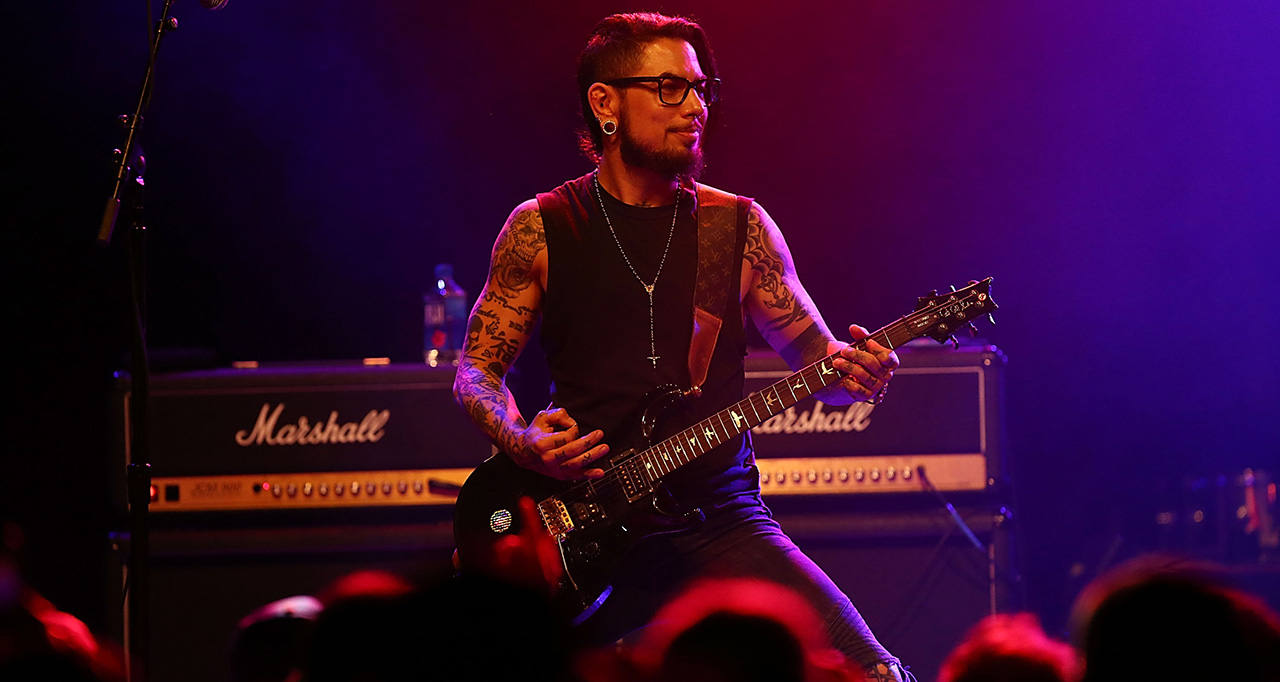
“But there’s more than that: there’s a brotherhood and a unity among musicians, and with guitar players especially. The time with John was the first time I’d ever played with him. After all these years, and with me being in the Chili Peppers, I’d never got the opportunity to play with him.
“The Chili Peppers and Jane’s Addiction were playing a benefit. I called John and said, ‘Dude, you have to join us for a song. I’m not going to let you not play with us!’ He was like, ‘Yeah, I’d love to.’ And that’s how it happened. I was just floored to have him because he’s one of my favorite guitar players, and he’s a contemporary favorite.
“And then, Tom has been a friend of the band for years. We’ve played with him many times. Tom was in a band called Lock Up before Rage Against the Machine.
“One New Year’s Eve, as a prank, we had Lock Up come out as Jane’s Addiction. Tom had a Dave Navarro wig, the singer had a wig with dreadlocks, the bass player had a punky Eric Avery wig and the drummer, I think, had like a weird, crazy Phyllis Diller wig!
“We had them come out and open up with one of our songs, and Tom Morello was dressed as me – though, of course, he sounded nothing like me. Midway through the song, the four of us came out, stopped them, plugged in ourselves, and continued on with the song!”
How did the crowd take it?
“We thought it would be really funny, right? It did not go over well at all! They had no idea what was going on. Not one person thought it was funny or understood what happened! We were talking about the night the other night in Cologne with Tom. It was definitely a worthwhile gimmick!”
It doesn’t matter if I’m going through effects pedals or what kind of amp I’m going through; it’s the way the strings feel on the neck
What’s been your most important piece of gear on the road?
“It’s always my guitar. I’ve been playing Paul Reed Smith guitars since 1991, the first Lollapalooza. It was the first show in Arizona, and back then, drugs and alcohol were a big factor in our band’s life. Sometimes we’d be at the same level and have a great time, and sometimes people would go in different directions.
“On that particular night I went in a different direction. Three songs in we got into a physical altercation and I decided, ‘I’m done playing this fucking show.’ I took all my Ibanez guitars and threw them into the audience.
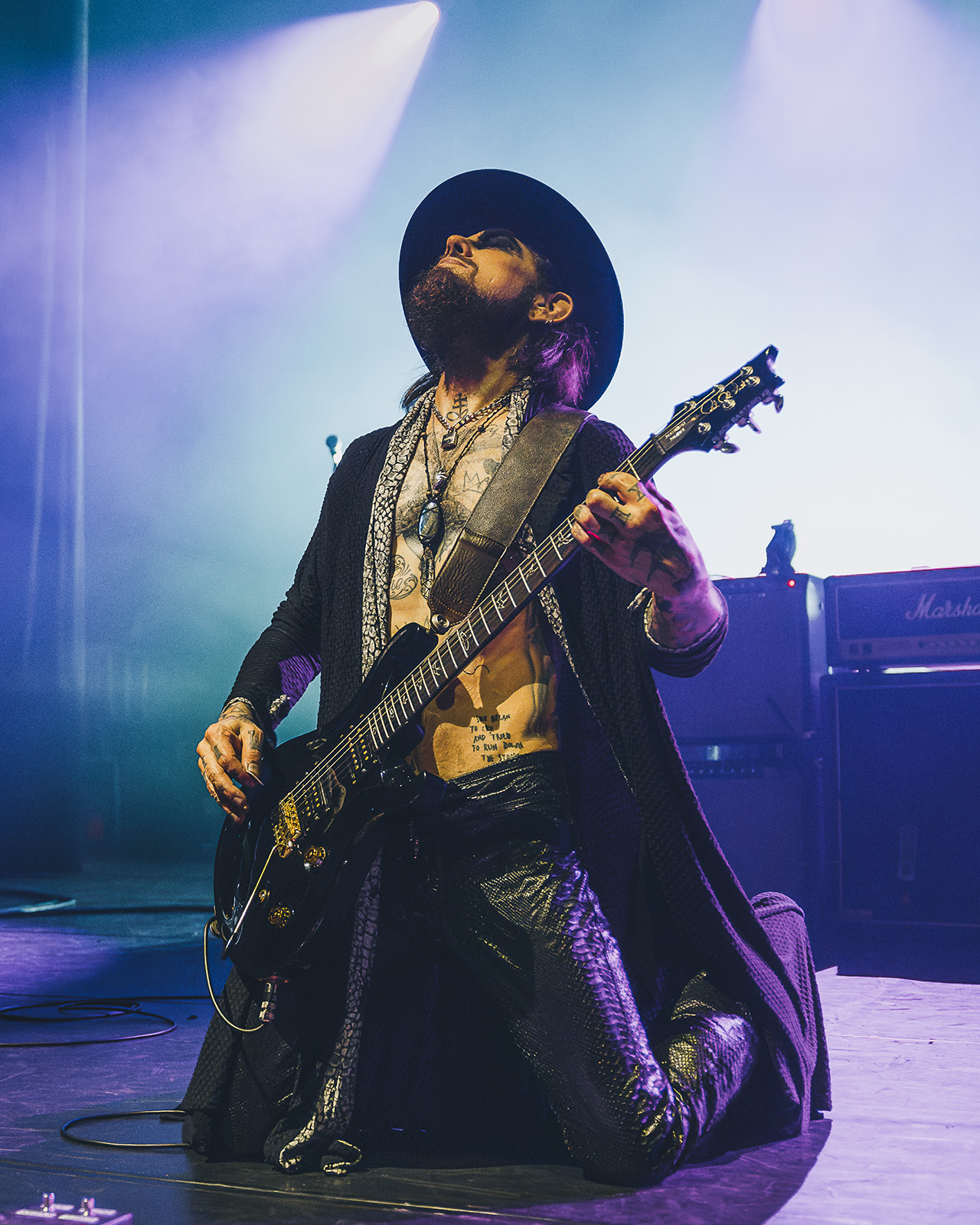
“I looked at Perry and I was like, ‘What are you going to do now?’ Like, ‘Ha ha ha, I got you! I don't have any guitars to play now!’ Five minutes later, I was like, ‘Oh shit, what am I going to do now?’ I was so focused on getting back at him that I didn't realize I'd just cut my own feet off.
“The guitarist of the Rollins Band, Chris Haskett, was playing with Corey Smith. At the next gig he said, ‘Why don’t you borrow one of my guitars and see if you like it?’ So for the second Lollapalooza show I was playing a PRS, and I said, ‘I fucking love this.’”
What made the PRS feel different?
“I always ride the volume knob. I never like having my sound thin when I’m on the volume knob, but I liked the PRS. So, Chris said, ‘Let me introduce you to Paul.’ They overnighted two or three guitars; I used them for the rest of Lollapalooza and the rest of my career – with the exception of the Red Hot Chili Peppers.”
Because their sound is so closely intertwined with Strats?
“I played Fender Stratocasters because I wanted to do their back catalog service. It would have been kind of impossible to play their old material with a humbucker. So with the exception of the Chili Peppers, I’ve been playing Paul Reed Smiths for about 33 years.
“It doesn’t matter if I’m going through effects pedals or what kind of amp I’m going through; it’s the way the strings feel on the neck. It’s the sustain within the body of the guitar. It’s the consistency of the volume knob. It’s the multitude of pickup selectors I have at my disposal.
“I can really make that thing sound like just about any guitar, you know? I was a Les Paul guy in the early days of Jane’s Addiction, and then I got into the Ibanez world because I was really focusing on my shredding skills. And then I found the PRS had the output of the Les Paul, but not the weight.
The fact that there could or might be a legacy of any kind is an incredible honor. I can’t tell you what it would be
“I could get a single-coil tone out of it without getting any thinner as I turned down my volume. I really have to be able to do that based on where Perry is vocally.”
You’ve said effects aren’t as important – but are there one or two that you use most often?
“I would say delay. When I came down for my Jane’s Addiction audition, Perry had an Ibanez DM-1000 rack-mounted delay, and I had a DM-1000 delay. We looked at each other and said, ‘We use that, too!’ It was just like magic; we were both on the same page.
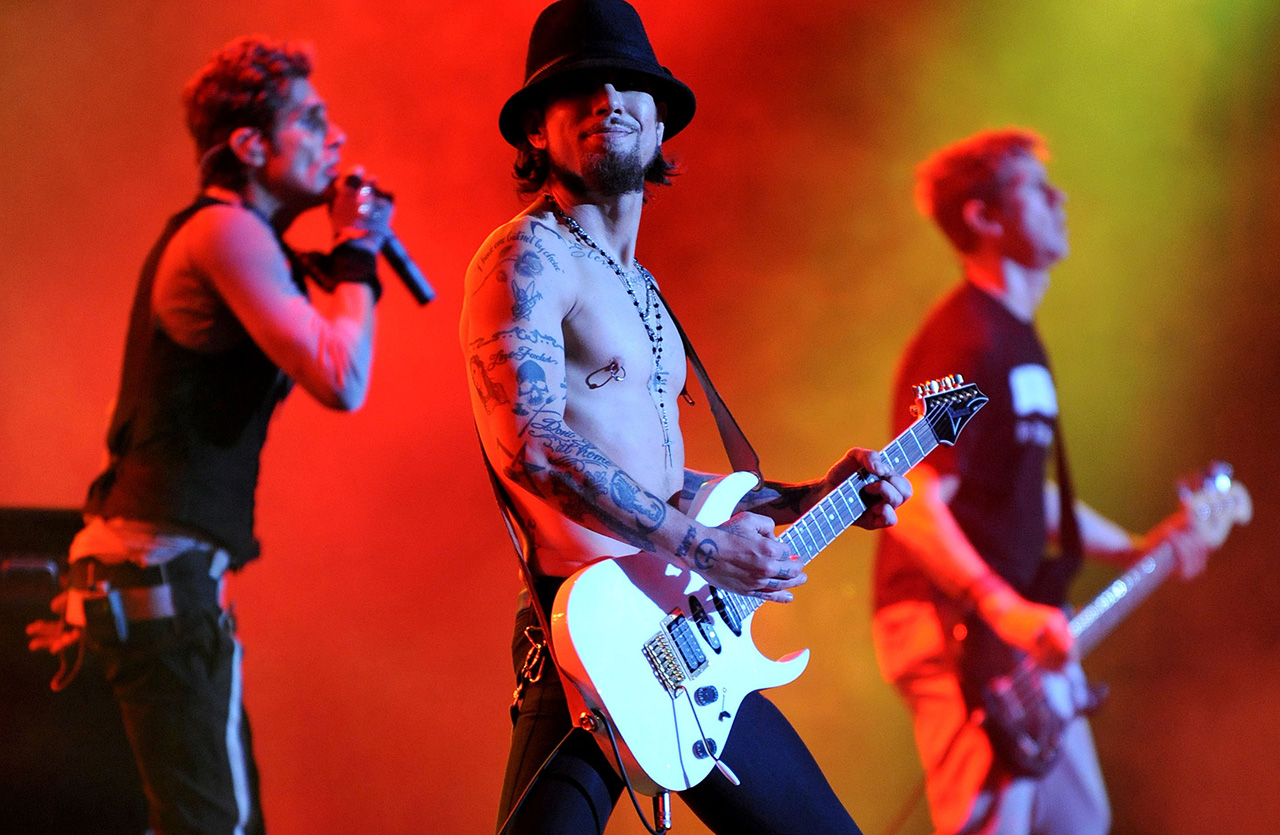
“Whenever I would go to do a solo, it always felt like a huge section of the band dropped out. It felt like, with no rhythm guitar, I really needed to fill up some more space. So I would use my delay. I think that my love of delay on lead guitar came from Wrathchild by Iron Maiden.”
Jane’s is putting out new music, while also being in the position of looking back. What’s the band’s legacy?
“You know, the fact that there could or might be a legacy of any kind is an incredible honor. I can’t tell you what it would be. That’s very difficult to ask somebody from the inside. I think if you asked Robby Krieger that question about The Doors, he wouldn’t know what to say.
“I would hope that part of the legacy would be that we were a band that didn’t fit any molds, broke rules, and got into the corners of all types of genres of music. And that we were led by an incredible poet and consisted of very efficient yet totally different musicians who somehow managed to make their differences work.”
- Imminent Redemption is out now. Jane’s Addiction kick off a new tour leg on August 9 – see JanesAddiction.com for full dates.







